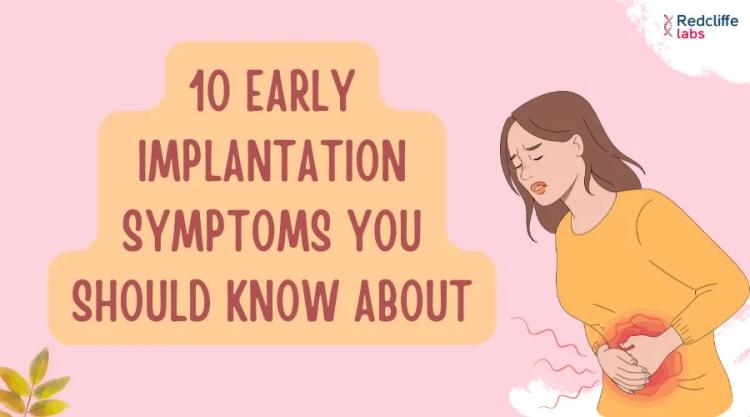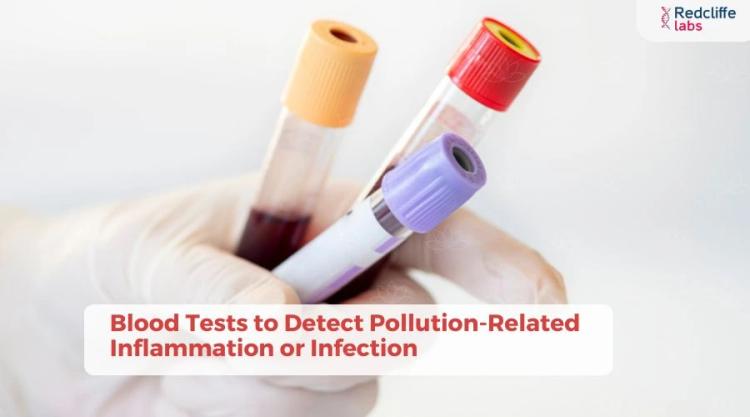Mini Stroke - Its causes, symptoms, and treatment

Medically Reviewed By
Dr. Ragiinii Sharma
Written By Prekshi Garg
on Jun 27, 2022
Last Edit Made By Prekshi Garg
on Jan 9, 2025

Stroke is often a fatal medical condition marked by a sudden loss of blood flow to the brain due to a blockage, rupture of blood vessels, and even hemorrhage in the brain. But, what is a Mini Stroke? Does it have anything to do with the remarkably reduced intensity of the symptoms?
Mini Stroke or Transient Ischemic Attack (TIA) is caused by a sudden and temporary loss of blood flow to the brain. This mimics the symptoms of strokes but for a very short time span, hence the prefix “mini.”
The incidence of a TIA is often considered to be a precursor and an alert for the patient to get checked for any underlying complications. Reports suggest that 1 in 3 patients experiencing TIA later experience a stroke, which can impose permanent damage or can even be fatal.
This article will explore everything concerning the meaning of Mini Stroke, its causes, symptoms, and the available treatment options.
What is a Mini Stroke?
Medically termed Transient Ischemic Attack (TIA), Mini Stroke showcases stroke-like symptoms following a temporary loss of blood flow to the brain.
It is often a warning sign and, if left medically unattended, can later manifest as a brain stroke in the patient. The primary difference between a mini-stroke from an actual brain stroke is in the damage it inflicts.
A mini-stroke isn’t necessarily fatal, and the symptoms often get better over the period of a day. Also, it doesn’t leave behind any permanent damage or inabilities in the patient. That isn’t the case with an actual stroke, primarily because it requires immediate medical attention and might permanently damage the patient’s cognitive, physical, or physiological abilities.
What are the Symptoms of a Mini Stroke?
A patient experiencing a mini-stroke might not have any preconceived symptoms. You might not feel anything different a day or two before.
However, the thing about a mini-stroke or TIA is that it lasts for a few minutes. Even the potent stroke-like symptoms are temporary and will disappear within an hour or two. In very rare cases, the symptoms can last up to 24 hours.
Some of the sudden symptoms of a Mini Stroke include:
- Numbness in the face,
- Trouble speaking; slurred speech,
- Sudden confusion,
- Trouble walking or standing straight,
- Blurred vision,
- Dizziness,
- Lack of coordination,
- Migraine-like headache,
- Difficulty swallowing,
- Facial droop,
- Vertigo.
Some patients might experience a gradual onset of these symptoms before they experience the stroke, while others have a sudden experience of these symptoms. In either case, if you feel something amiss with your body functions, it is ideal to seek immediate medical intervention.
In some cases of TIA, the symptoms or the condition can be an alert for an upcoming stroke. So, even if you feel better after a mini-stroke and the symptoms have gone down, it is still ideal to see a doctor and get the required tests done.
What Causes a Mini Stroke?
Unlike an ischemic stroke, where a blood clot causes permanent damage, a mini-stroke involves a temporary blockage of blood flow to the brain. It could be due to a temporary blockage from excess cholesterol build-up in the blood vessels.
Atherosclerosis (excess fat build-up in the blood vessels) is a leading contributor to TIA and Ischemic stroke in patients. The plaque build-up in the blood vessels makes them narrower, leading to insufficient blood flow and eventually leading to restricted blood flow due to a complete blockage.
There are multiple risk factors associated with a mini-stroke. Some risk factors are beyond the control of the patient, while there are a few others that are preventative.
Risk Factors Beyond Control | |
| Risk factor | What does it suggest? |
| Family history | A genetic predisposition contributes to an increased risk of experiencing a TIA or an eventual ischemic stroke. |
| Age | People above the age of 55 are at higher risk. |
| Sex | Men are at higher risks of having a mini-stroke compared to women. |
| Medical history of mini-stroke | Patients with a history of TIA are at higher risk of its recurrent return. |
| Sickle cell disease | This inherited condition is marked by a changed morphology of the red blood cells that carry less oxygenation, leading to the risks of a mini-stroke or ischemic stroke. |
Preventable and Manageable Risks | |
| Risk factor | What does it suggest? |
| High blood pressure | Patients with blood pressure above 140/90 mm Hg are at heightened risk of having a mini-stroke. |
| High cholesterol | Excess cholesterol contributes to plaque build-up in the blood vessels, which contributes to a heart attack in the patients. |
| Cardiovascular disease | High cholesterol directly contributes to CVD, which is a group of coronary diseases that contribute to increased risks of a mini-stroke. |
| Diabetes | This includes the onset of type-2 diabetes, which is generally a lifestyle disorder and can get worse with excess fat accumulation in the arteries. |
| Obesity | Excess body weight, especially with the excess visceral fat deposition around the abdomen, contributes to an increased risk of mini-stroke in the patient. |
| Viral infections | Ongoing risks of viral infections, like Covid-19, might also contribute to the risks of mini-stroke. |
Besides these, certain lifestyle choices like eating an unhealthy diet, smoking excessively, drinking alcohol, drug abuse, etc., also contribute to the risks of a mini-stroke. Remember that lifestyle choices are preventable causes, which means that with a correct switch in your habits, you too can prevent the risks exponentially.
How is a Mini Stroke Diagnosed?
Now that you know a bit about the symptoms and what causes a TIA, it is time to look into the diagnosis. As we said, these are very fragile and sensitive medical conditions. If you experienced a mini-stroke, you must seek immediate medical help.
Although a mini-stroke isn’t known for inflicting any permanent damage, an immediate medical examination helps chalk out the potential complications and any damage.
The easiest way to diagnose a mini-stroke is through imaging techniques like a CT scan or MRI. For more accurate readings, your doctor will preface undergoing an MRI scan to look into all the possible complications or investigate what contributed to the mini-stroke in the first place.
Some of the additional diagnostic testing options include:
Physical examination
This involves the doctor checking your vitals and any residual symptoms or discomfort that you might be experiencing. Your doctor will run a few physical tests to check your reflexes, vision, speech, strength, and overall sensory system.
The primary objective of a physical examination is to rule out the potential of any permanent damage from the mini-stroke. Additionally, an examination of the carotid artery in the neck is also part of the physical examination.
Ultrasonography
A very common imaging technique, an ultrasound helps pinpoint the exact areas of a blockage. The transducer generally sends the sound waves through the neck, which generates the images on the computer screen. It enables the doctor to trace out any further risks of stroke in the patient.
Echocardiography
Since cardiovascular diseases potentially contribute to a risk of a mini-stroke and ischemic stroke in the patient, your doctor will also prescribe an ECHO as part of the diagnosis. It enables the doctor to understand the heart function and look out for any potential blockages or blood clots contributing to mini-stroke risks.
Arteriography
Although not the most commonly prescribed test, arteriography is like an X-ray for the arteries. It analyzes the health of the arteries in the body. Your consulting radiologist will start the procedure by entering a thin catheter through a small incision around the groin region. This catheter is then inserted into the main coronary arteries in the body to check for blockages.
Undergoing all of these tests should give a comprehensive understanding of what’s wrong and what needs to be done to overcome the risks and any future fatalities associated with it.
How is a Mini Stroke Treated?
Once your doctor reaches a conclusive diagnosis of the condition, the next thing to do is get you on an immediate treatment option. Generally, there are three modes of treatment, depending on the severity of the condition – medication, surgery, or angioplasty.
Medications
Your doctor’s primary aim with the treatment is to restore the normal blood flow to the brain. This is generally regulated with the needful medications as mentioned below:
Anti-platelet drugs – prevent the platelet from sticking together, thereby reducing the risks of a blood clot formation in the blood vessels. There are a few common drugs prescribed for this. However, we’d recommend that you never self-medicate and always stick to what your doctor suggests. The correct dosage and administration are key to a quicker recovery.
Anticoagulants – these drugs are formulated to disrupt the function of the clotting system proteins in the body. Your doctor will likely be very assertive with the intake of this specific drug since missing an anticoagulant in a day or delaying the dosage can have consequences for the patient.
Surgical interventions
A very common procedure, carotid intervention, is suggested in patients with excess fatty deposits in the carotid arteries. It is a minimally invasive procedure wherein a catheter is inserted through the femoral artery to open the clogged carotid artery. A stent is then placed to prevent further coagulation or clots.
However, surgery isn't a favored treatment for patients with very severe blockage or narrowing in the carotid artery. In such cases, carotid endarterectomy is a more favored route of treatment.
Angioplasty
A carotid angioplasty, followed by stenting, is a common intervention to manage or prevent the risks of a future mini-stroke in the patient. It involves a balloon-like device that opens up the narrowed and clogged arteries. A stent is placed in the opened artery to ensure optimal blood flow into the brain.
Besides these medical interventions, your doctor will advise you to make immediate lifestyle changes as well. This involves:
- Eating a well-balanced and nutritious diet
- Keeping your weight in check
- Avoiding fried or junk foods
- Including more fruits and vegetables into the diet
- Managing stress
- Getting quality sleep
- Monitor and managing associated chronic diseases
Getting on-time treatment after a mini-stroke is crucial to prevent any future onset of a full-blown ischemic stroke in the patient.
What should One Do if they Notice a Person having a Mini Stroke?
A mini-stroke is often short-lived, and the symptoms might not be as pronounced. However, you must keep note of the symptoms.
Medical professionals highlight the “FAST” technique as a form of first aid for patients suffering from a mini-stroke.
Here’s what you need to look out for:
F (Face) – look for droopiness in the face or smile
A (Arm) – notice if the patient is complaining about an arm numbness or weakness.
S (Speech) – check if the speech is slurred or not.
T (Time) – call for immediate medical emergency support if someone is experiencing a mini-stroke/ischemic stroke.
It is always ideal to be prepared for the worst. Even if you aren’t the most skilled with the first aid, have a medical emergency ready in case you notice something different with the patient. You can never be too sure about the outcome of the situation.
FAQs
How long does a ministroke last?
A mini-stroke generally lasts for a few seconds to a few minutes. The symptoms can prevail for an hour or so or even up to 24 hours in some patients.
Can you recover from a mini-stroke?
A mini or minor stroke doesn’t cause any permanent damage. However, it is often a warning for a subsequent ischemic stroke that might happen if proper treatment isn’t administered. So, recovery from a mini-stroke is easy and generally gets better within a day.
Can aspirin prevent a stroke?
Aspirin is a type of anti-platelet drug that prevent the risks of clots in the blood vessels. So, your doctor might prescribe this as the first line of treatment and preventative measure.
Conclusion
Mini stroke, although not damaging, is a very serious condition. If you or someone you know is experiencing the symptoms, don’t delay getting the right medical examination and treatment for them. If you brush it aside as nothing once the symptoms subside, the same can later manifest as a fatal ischemic stroke. Understanding the symptoms and getting immediate treatment is crucial in this case.




